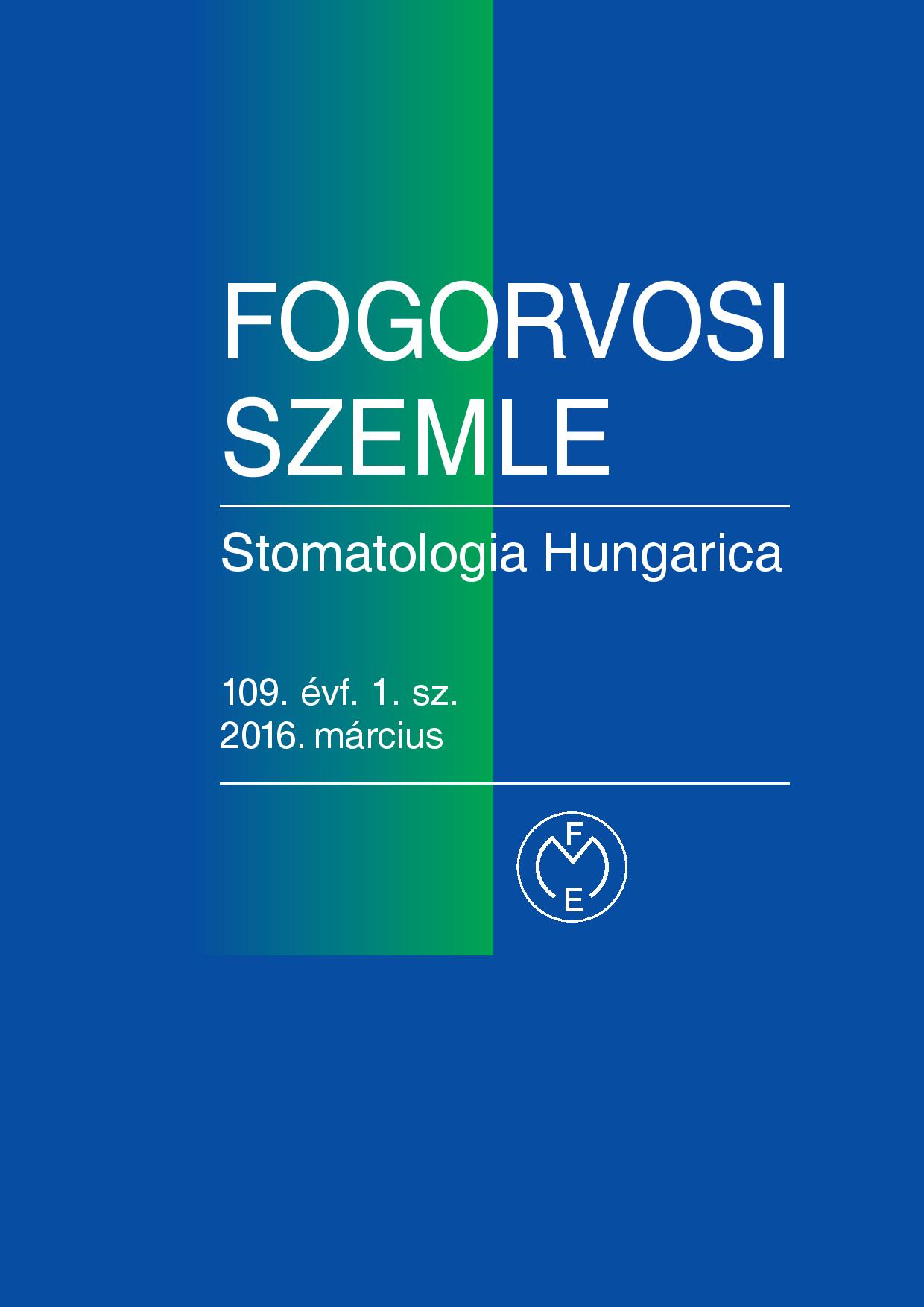Incidence of combination syndrome based on the orthopantomograms made between 2009 és 2014 at the Department of Prosthodontics, University of Pécs, Hungary
Abstract
The treatment of patients having a completely edentulous maxillary arch and lower anterior teeth present is frequent in the dental practice. In these cases some specific changes can be detected in the oral cavity and on orthopantomograms. These signs were summarized and described first by Kelly (1972).
Aim of the study was to examine the presence of the specific signs of the combination syndrome among the patients between 2009 and 2014. With the help of the electronic patient registry system used by the University of Pécs, 319 patients were filtered who were diagnosed with anodontia code (K0000 International Classification of Diseases (ICD)) in the examined period. 220 patients’ orthopantomograms were evaluated searching for specific symptoms of the combination syndrome. 34 patients had complete edentulous maxilla and anterior teeth in the mandible. 4 patients (11,7%) showed the main sign of the combination syndrome, i.e. the maxillary anterior bone loss. Hypertrophy of maxillary tuberosity (9 cases, 26,4%), extrusion of the lower anterior teeth (6 cases, 17,6%) and great resorption of the distal mandibular ridge (16 cases, 47%) was diagnosed on the X-rays. The clinical examination of three patients supported the radiological findings.
The combination syndrome was detectable, but the incidence rate was lower in this population in comparison with the data available in dental scientific publications.
Copyright (c) 2021 Authors

This work is licensed under a Creative Commons Attribution 4.0 International License.


.png)




1.png)



